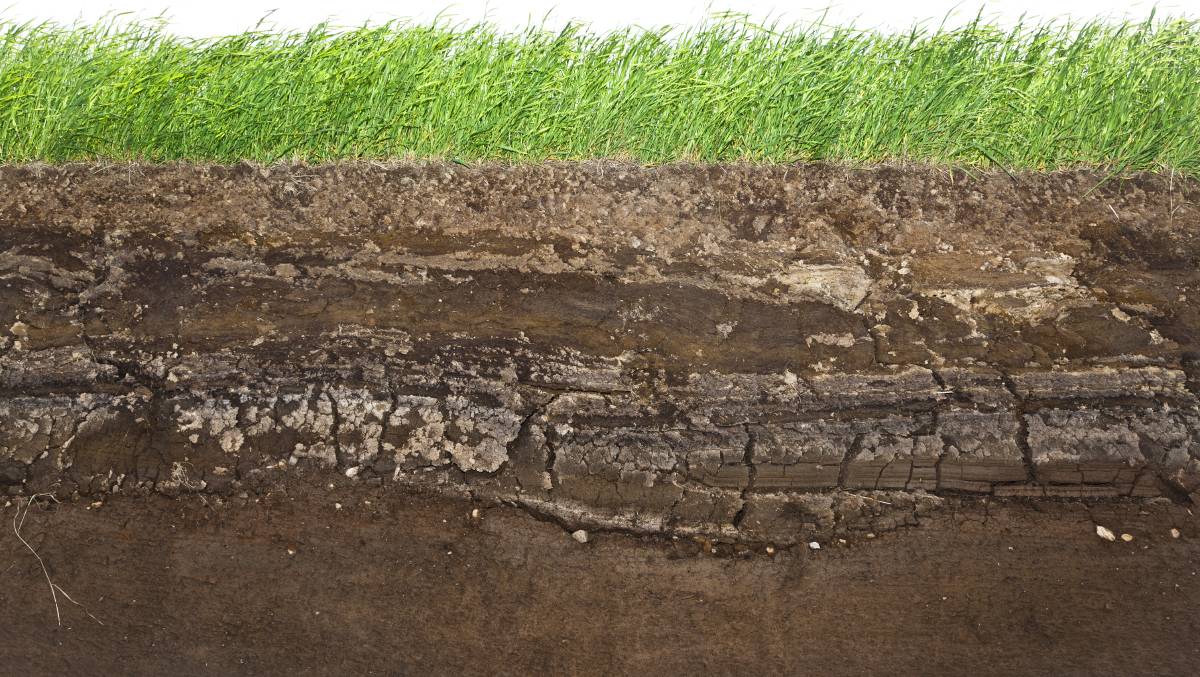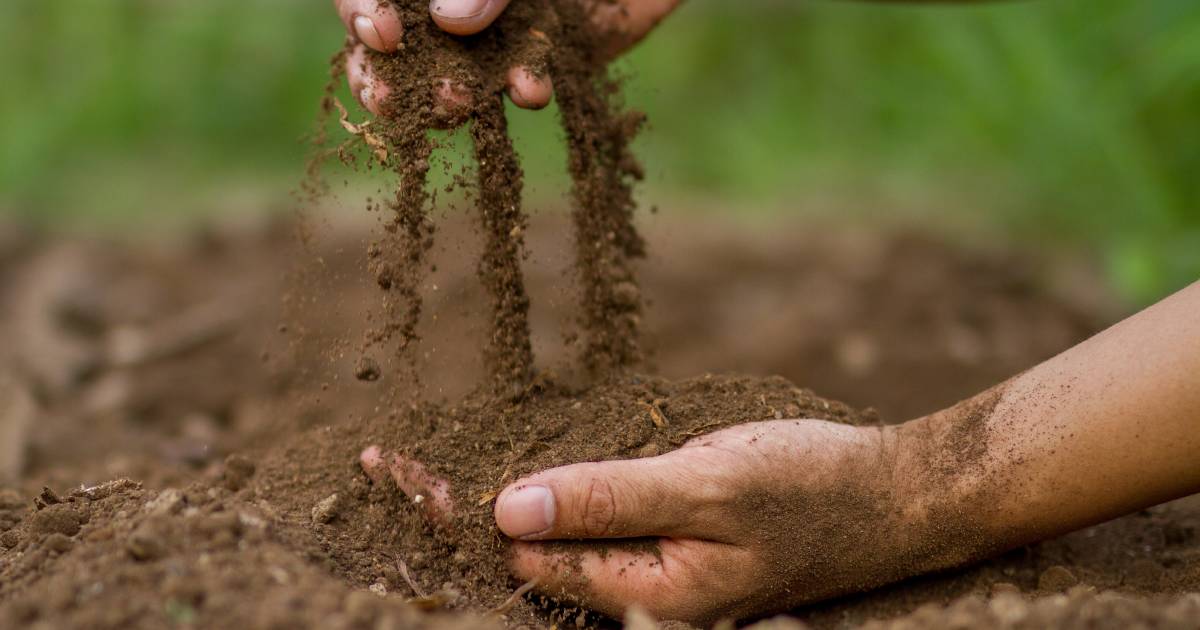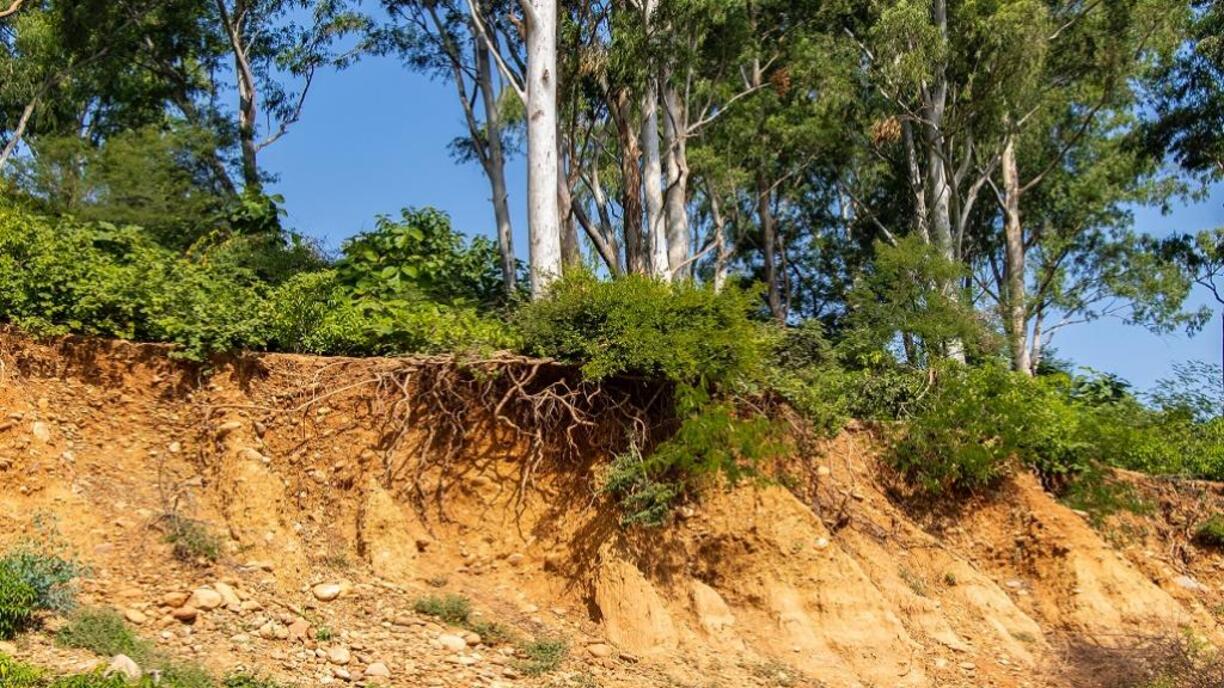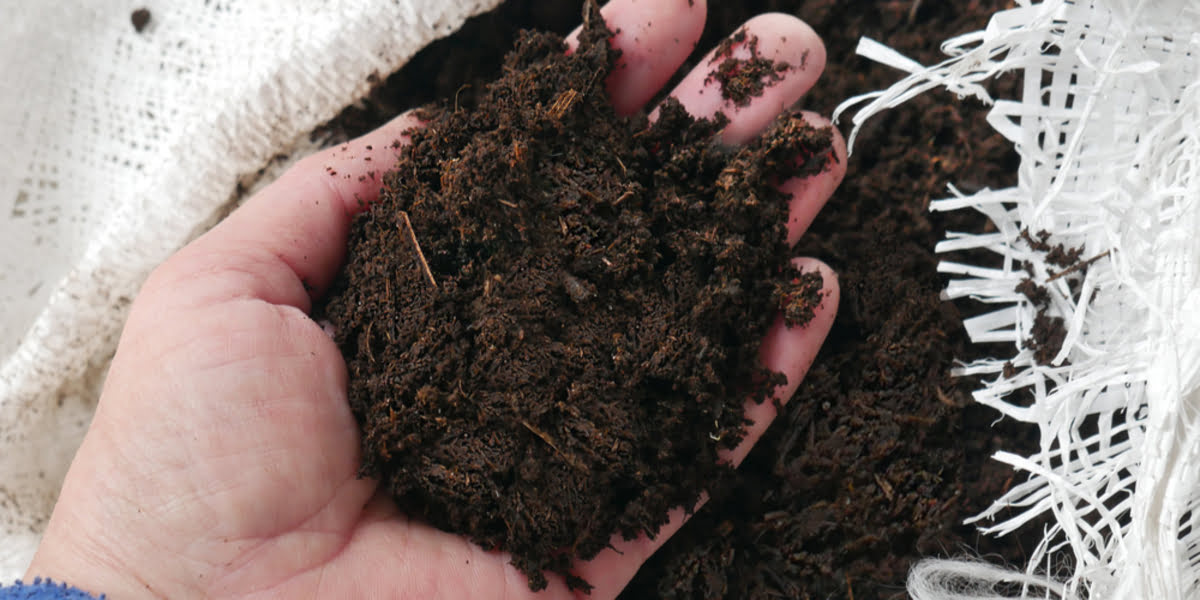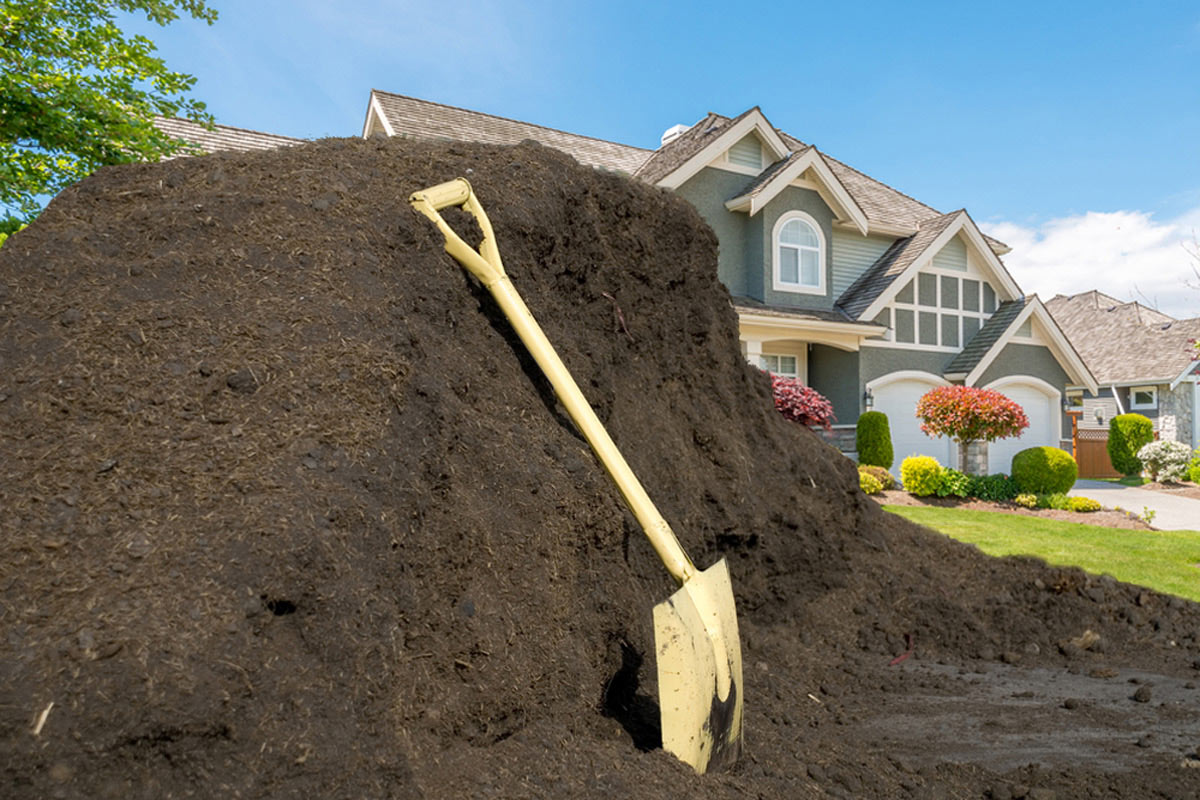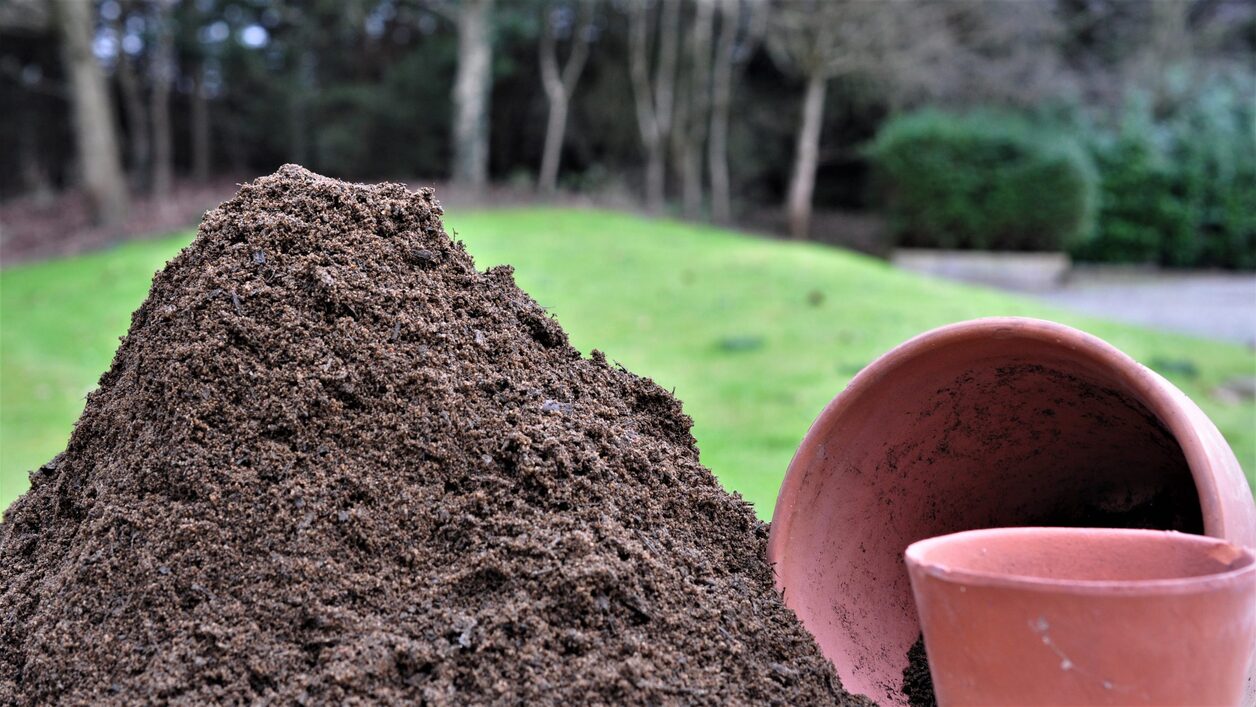Home>Gardening Basics>Understanding Soil>Why Is Topsoil Considered A Nonrenewable Resource
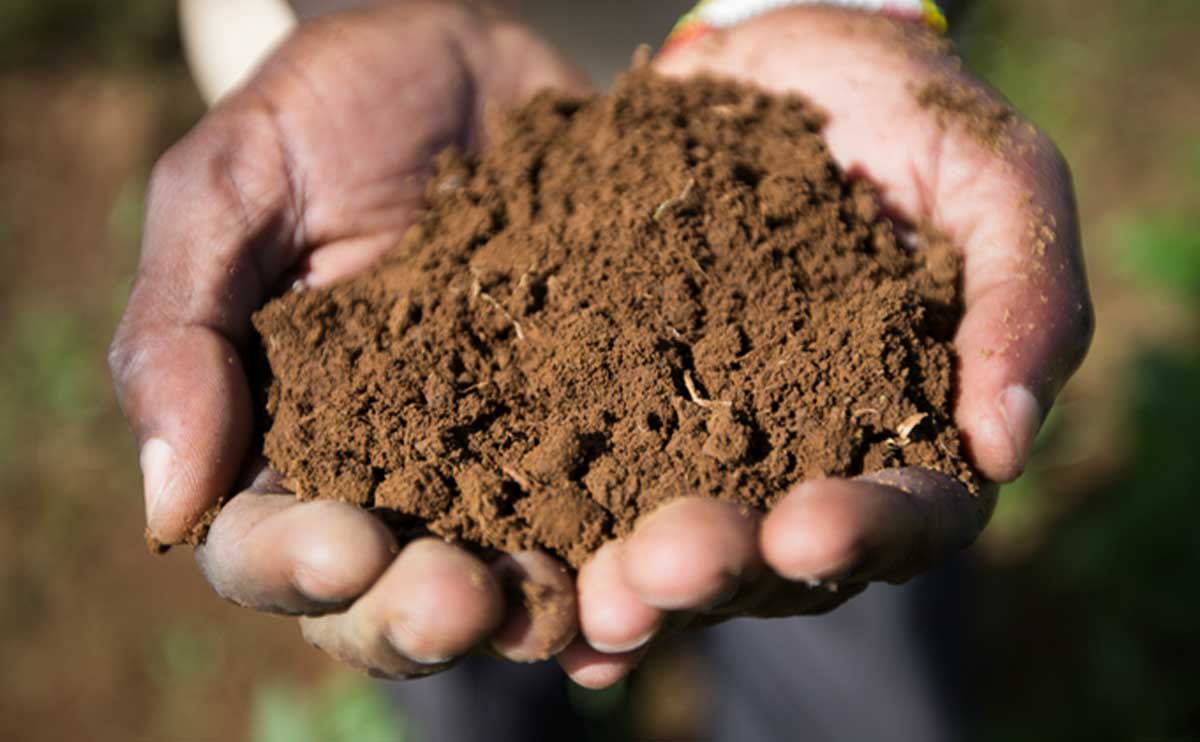

Understanding Soil
Why Is Topsoil Considered A Nonrenewable Resource
Modified: February 10, 2024
Understanding soil and why topsoil is a nonrenewable resource. Discover the importance of preserving this vital component of our ecosystems.
(Many of the links in this article redirect to a specific reviewed product. Your purchase of these products through affiliate links helps to generate commission for Chicagolandgardening.com, at no extra cost. Learn more)
Table of Contents
Introduction
Topsoil, often referred to as the “skin of the Earth,” is a vital component of our planet’s ecosystem. It is the uppermost layer of soil, approximately 5 to 10 inches thick, where the processes of nutrient cycling and organic matter accumulation primarily occur. Topsoil is incredibly rich in organic matter, minerals, and microorganisms that support the growth of plants, and it plays a crucial role in sustaining agriculture and natural ecosystems.
However, the importance of topsoil goes beyond mere fertility. It is a nonrenewable resource that requires hundreds, if not thousands, of years to form through the continuous weathering of rocks and the decomposition of plant matter. Unfortunately, human activities such as unsustainable agricultural practices, deforestation, and urbanization have accelerated the erosion and depletion of topsoil at an alarming rate.
Understanding the significance of topsoil as a nonrenewable resource and the factors contributing to its degradation is key to addressing the environmental challenges we face today. In this article, we will delve deeper into the concept of topsoil, discuss its importance, explore the factors that contribute to its degradation, shed light on its classification as a nonrenewable resource, and highlight the consequences of topsoil depletion. Finally, we will examine the current efforts being made to conserve topsoil and emphasize the urgent need to prioritize its protection.
What is topsoil?
Topsoil is the uppermost layer of soil that covers the Earth’s surface, typically ranging from 5 to 10 inches in depth. It is composed of a combination of mineral particles, organic matter, water, air, and numerous microorganisms. This layer is crucial for plant growth and sustains a wide array of organisms, making it a vital component of the Earth’s ecosystem.
The composition of topsoil can vary depending on factors such as climate, location, and geological history. It is primarily made up of mineral particles, including sand, silt, and clay, which determine the soil’s texture. Organic matter, such as decaying plant and animal material, contributes to the fertility of topsoil and provides essential nutrients for plant growth.
Topsoil also serves as a reservoir for water and air, allowing plant roots to access the necessary oxygen and facilitating the movement of water throughout the soil. This moisture retention capability is particularly important during periods of drought or heavy rainfall, as it can help regulate the water supply for plants and prevent soil erosion.
Furthermore, topsoil houses a vast array of microorganisms that play critical roles in nutrient cycling and decomposition. These microorganisms break down organic matter into simpler compounds that plants can absorb, facilitating the recycling of nutrients within the soil. This symbiotic relationship between microorganisms and plants is essential for maintaining a healthy and fertile topsoil layer.
Overall, topsoil is a dynamic and complex environment that supports the growth of plants and sustains the delicate balance of ecosystems. Its combination of mineral particles, organic matter, water, air, and microorganisms makes it a unique and invaluable resource.
The Importance of Topsoil
Topsoil plays a critical role in supporting a variety of ecosystems and providing essential resources for both human and natural systems. Its importance extends beyond just being a medium for plant growth; it is a fundamental component of a healthy and sustainable environment.
One of the primary functions of topsoil is its role in agriculture. The majority of our food production relies on fertile topsoil to grow crops. It provides the necessary nutrients, water retention capacity, and a suitable habitat for plant roots. Without fertile topsoil, the capacity to produce food would be severely diminished, leading to food scarcity and higher food prices.
Topsoil also plays a crucial role in maintaining water quality. It acts as a natural filter, absorbing and trapping pollutants, preventing them from reaching groundwater sources or nearby water bodies. This filtration capacity helps protect drinking water supplies and supports a healthy aquatic ecosystem.
Furthermore, topsoil is vital for supporting biodiversity. It provides a habitat for countless organisms, from microorganisms to insects to small mammals. These organisms contribute to the overall ecological balance, contributing to nutrient cycling, decomposition, and pollination. Loss of topsoil can lead to habitat destruction and a decline in biodiversity, disrupting entire ecosystems.
In addition to its environmental importance, topsoil has significant cultural and historical value. The availability of fertile land has shaped civilizations throughout history. Agriculture has been the foundation of human societies, and fertile topsoil was an essential resource for sustaining settlements and enabling the growth of civilizations.
Moreover, topsoil plays a role in climate regulation. It stores carbon dioxide, helping mitigate climate change by reducing the concentration of greenhouse gases in the atmosphere. Rich topsoil with high organic matter content acts as a carbon sink, sequestering carbon and reducing its release into the atmosphere.
Overall, the importance of topsoil cannot be overstated. It sustains agriculture, supports biodiversity, protects water quality, and mitigates climate change. Recognizing its significance is crucial to implementing effective strategies for topsoil conservation and sustainable land management.
Factors Contributing to Topsoil Degradation
Topsoil degradation is a significant concern worldwide, with various factors contributing to its accelerated erosion and depletion. Understanding these factors is crucial in developing strategies to mitigate topsoil loss and preserve this vital resource.
- Poor agricultural practices: Unhealthy agricultural practices, such as excessive tilling, overuse of chemical fertilizers and pesticides, and monocropping, can contribute to topsoil degradation. These practices disrupt the natural balance of soil organisms, reduce organic matter content, and increase soil erosion vulnerability.
- Deforestation: The clearing of forests for agriculture, urbanization, or logging removes the protective cover and vegetation that help prevent soil erosion. This results in increased water runoff, which can cause severe soil erosion and the loss of topsoil.
- Improper irrigation and drainage: Inefficient irrigation systems and poor drainage can lead to waterlogging and soil compaction. This reduces the ability of the topsoil to absorb moisture properly, increases the risk of erosion, and degrades the soil structure.
- Urbanization and construction activities: The expansion of cities and construction projects often involves the removal of topsoil. Urban areas are paved, limiting natural processes such as water infiltration and reducing the opportunity for vegetation growth, further exacerbating topsoil degradation.
- Climate change: Alterations in precipitation patterns, increased frequency of extreme weather events, and rising temperatures associated with climate change can affect topsoil health. Heavy rainfall can cause surface runoff and erosion, while droughts can lead to soil compaction and reduced organic matter content.
- Soil contamination: Pollution from industrial activities, improper waste disposal, and the use of chemical substances can contaminate the soil, rendering it unsuitable for plant growth and disrupting soil ecosystems. Soil contamination reduces the fertility and functionality of topsoil, contributing to its degradation.
It is essential to address these factors and adopt sustainable land management practices to mitigate topsoil degradation. Implementing conservation measures such as contour plowing, terracing, crop rotation, agroforestry, and the use of organic fertilizers can help protect topsoil and promote its long-term health and productivity.
Understanding Topsoil as a Nonrenewable Resource
Topsoil is often referred to as a nonrenewable resource because it takes an incredibly long time to form and cannot be replenished within a human lifetime. While it may seem abundant, the rate at which topsoil is being lost far exceeds the rate at which it is naturally generated.
The formation of topsoil is a slow and intricate process that occurs over hundreds, if not thousands, of years. It results from the weathering of rocks and the gradual accumulation of organic matter from plants and microorganisms. The factors that contribute to topsoil formation, including climate, topography, and vegetation, act over long timescales.
However, human activities are depleting topsoil at an alarming rate, often exceeding its natural regeneration capacity. Unsustainable land practices, intensive agriculture, deforestation, and urbanization are causing accelerated erosion and degradation of topsoil, leading to a net loss of this critical resource.
Unlike renewable resources such as water or sunlight, which can replenish themselves within a relatively short period, topsoil requires centuries or even millennia to form. This inability to replenish itself quickly results in the classification of topsoil as a nonrenewable resource.
Once topsoil is lost or degraded, it takes an extensive amount of time and effort to restore its fertility and functionality. The restoration process involves implementing soil conservation measures, such as terracing, reforestation, and organic farming practices, to rebuild the organic matter content and stabilize the soil structure.
Recognizing topsoil as a nonrenewable resource is crucial for sustainable land management and conservation efforts. It emphasizes the importance of preserving and protecting existing topsoil, adopting sustainable agricultural practices, and implementing erosion control measures to prevent further degradation.
By understanding the nonrenewable nature of topsoil, we can make informed decisions and take proactive steps to protect this invaluable resource for future generations. It highlights the urgency of prioritizing soil conservation and sustainable land management practices to ensure the long-term productivity and health of our soils.
Consequences of Topsoil Depletion
The depletion of topsoil has detrimental consequences for both the environment and society. As this vital resource is lost or degraded, various negative effects emerge, impacting agricultural productivity, water quality, biodiversity, and overall ecosystem health.
One of the primary consequences of topsoil depletion is reduced agricultural productivity. Topsoil provides the essential nutrients necessary for plant growth. When it is eroded or depleted, the fertility of the land decreases, leading to lower crop yields and reduced food production. This can result in food scarcity, higher food prices, and increased pressure on already vulnerable communities.
Topsoil erosion also leads to the loss of valuable ecosystem services. As topsoil is washed away or blown by wind, it takes with it organic matter, nutrients, and beneficial microorganisms. This loss disrupts the delicate balance of ecosystems, affecting the overall health and biodiversity of the surrounding environment. Reduced biodiversity can lead to imbalances in predator-prey relationships, pollination disruption, and a decrease in the overall resilience of ecosystems.
Furthermore, topsoil depletion has severe implications for water quality. When topsoil is eroded, it often ends up in rivers, streams, and lakes, causing sedimentation and impairing water quality. Sediment-laden water can clog aquatic habitats, block sunlight penetration, and harm aquatic life. Additionally, the loss of topsoil diminishes the soil’s capacity to retain water, leading to increased runoff and a higher risk of flooding, further impacting communities and ecosystems downstream.
Soil erosion also has climate implications. As topsoil is eroded, carbon stored within organic matter is released into the atmosphere as carbon dioxide, contributing to greenhouse gas emissions and exacerbating climate change. This loss of carbon storage potential further exacerbates the challenges associated with reducing global greenhouse gas emissions.
Economically, topsoil depletion can have far-reaching consequences. Diminished agricultural productivity and increased dependence on external sources can lead to economic instability, especially in regions heavily reliant on farming. Additionally, the costs associated with erosion control measures, land restoration, and water treatment to mitigate the effects of topsoil depletion can place a significant economic burden on governments and communities.
It is clear that the consequences of topsoil depletion are wide-ranging and have significant implications for food security, water quality, biodiversity, and ecosystem health. Recognizing the urgency of addressing topsoil loss is paramount to safeguarding the well-being of both present and future generations.
Current Efforts to Conserve Topsoil
Awareness of the importance of topsoil conservation has grown significantly in recent years, leading to various efforts and initiatives aimed at preserving and restoring this valuable resource. Governments, organizations, farmers, and individuals are implementing strategies to mitigate topsoil erosion, promote sustainable land management practices, and protect the health and fertility of the soil.
One approach to conserving topsoil is the implementation of soil conservation measures. These include techniques such as contour plowing, which involves plowing across the contour of the land to create ridges and furrows that help slow down water runoff and reduce erosion. Terracing is another effective method, particularly on sloped areas, where steps are created to capture water runoff and prevent soil erosion.
Adopting crop rotation and diversifying agricultural practices is another strategy to conserve topsoil. Planting different crops in rotation helps to enhance soil health, break disease cycles, and reduce the dependence on chemical inputs. Growing cover crops during fallow periods can also protect the soil from erosion and improve soil structure and nutrient content.
Conservation tillage techniques, such as no-till or reduced tillage, minimize soil disturbance and help retain crop residues on the soil surface. Leaving these residues in place helps protect the soil from erosion, improves water infiltration, and enhances the organic matter content, thus promoting topsoil conservation.
Awareness and education campaigns are crucial in promoting topsoil conservation practices. Governments, NGOs, and agricultural extension services provide resources, training, and information to farmers and landowners on the benefits of sustainable land management. These initiatives raise awareness about the importance of topsoil preservation and provide practical guidance on implementing conservation practices.
Furthermore, reforestation efforts play a significant role in topsoil conservation. Trees have extensive root systems that stabilize the soil, reducing erosion risks. Forested areas act as natural buffers, preventing soil runoff and protecting the surrounding land from erosion. Promoting afforestation and agroforestry practices can contribute to the preservation of topsoil and the prevention of soil degradation.
Government policies and regulations also have a crucial role to play. Implementing and enforcing regulations that require conservation practices, such as erosion control measures and sustainable land management techniques, can help protect topsoil. Financial incentives, subsidies, and support programs can encourage farmers and landowners to adopt conservation practices and prioritize soil health.
Research and technological advancements are continuously uncovering new methods for topsoil conservation. Scientists are developing innovative approaches to improve soil health, such as biochar application, precision agriculture, and the use of organic amendments. These advancements aim to enhance soil fertility, reduce erosion, and promote sustainable land management practices.
It is crucial to continue investing in research, education, and sustainable land management practices to conserve topsoil effectively. Collaborative efforts between governments, organizations, farmers, and individuals are essential to address topsoil depletion and ensure the availability of fertile soil for future generations.
Conclusion
Topsoil, the thin layer of Earth’s surface that supports life, is an invaluable and nonrenewable resource. Its fertility and health are fundamental to sustaining agriculture, preserving biodiversity, ensuring clean water, and mitigating climate change. However, human activities have accelerated topsoil degradation, causing a loss of this vital resource at an alarming rate.
Understanding the significance of topsoil and the factors contributing to its depletion is essential for addressing the environmental challenges we face today. Poor agricultural practices, deforestation, improper land management, climate change, and soil contamination are all contributing to the accelerated erosion and degradation of topsoil.
The consequences of topsoil depletion are far-reaching, impacting agricultural productivity, water quality, biodiversity, and ecosystem health. Food scarcity, economic instability, impaired water systems, and diminished natural habitats are just a few of the consequences we face if we do not take immediate action to conserve topsoil.
Fortunately, there are current efforts to conserve topsoil and preserve its health and functionality. These efforts include implementing soil conservation techniques, adopting sustainable land management practices, promoting education and awareness, supporting reforestation, and investing in research and technological advancements.
Conservation measures such as contour plowing, crop rotation, reduced tillage, and afforestation help prevent erosion, promote soil health, and mitigate topsoil depletion. Government regulations, financial incentives, and education campaigns play a vital role in encouraging sustainable land management practices among farmers and landowners.
However, more needs to be done. It is crucial to continue investing in research, education, and promoting sustainable land management practices. Collaboration and collective action are crucial in addressing topsoil depletion effectively and ensuring the availability of fertile soil for future generations.
Protecting topsoil and preserving its health is not just an environmental concern; it is a necessity for ensuring food security, fostering a resilient ecosystem, and sustainable economic development. By recognizing the significance of topsoil as a nonrenewable resource and implementing conservation measures, we can safeguard this essential component of our planet’s ecosystem for the benefit of current and future generations.


